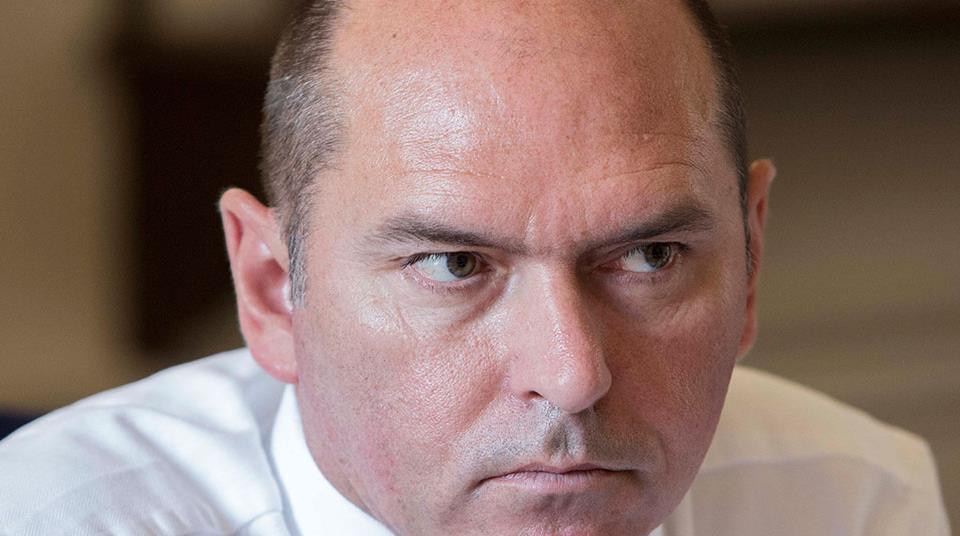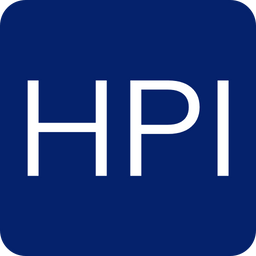Cowper’s Cut 395: The first virtual NHS redisorganisation is going so well

For the first time in what feels like a long time, we have the luxury of starting with genuinely good news about the English NHS: the Financial Times brings us a report of recent ONS data showing an increase in NHS productivity.
The FT reports that “activity in hospital trusts increased by 5.8 per cent in 2024-25, outpacing the increase in costs and delivering productivity growth of 2.7 per cent, according to figures released by the Department of Health and Social Care on Monday. The government’s 10-year plan to modernise the NHS has set a target of 2 per cent productivity growth each year to deliver £17 billion in savings by 2028-29”.
A productivity increase of 5.8% is significant. The article rightly notes that “NHS productivity collapsed during the Covid-19 pandemic, and remains below pre-2019 levels … the DHSC said the improvement in productivity in hospital trusts reflected efforts to increase same-day discharges, boost the adoption of technology, cut reliance on agency staff and improve workforce retention”.
But is it sustainable?
This depends on what the root causes of this increase are.
There has been increased attention on reducing agency spending over the past year, hopefully lowering input costs. It is likely that the community diagnostic centres; virtual wards; paid Advice And Guidance; paid waiting list validation; and the NHS Long-Term Plan (2018 edition) surgical hubs that have been coming online have all contributed.
And nobody is unaware of the current return-to-discipline financial squeeze, which will not be relaxed any time soon.
We need more curiosity and research into what has driven this productivity improvement, because we need to know what works. The Government press release about it, which you can read here, has much assertion but remarkably little actual hard, root-cause evidence of what has been effective.
Sadly, I won’t be holding my breath for nationally-commissioned credible evaluation: primary care has been increasing its productivity for years now, and the absence of national curiosity about that is striking. (At least The Health Foundation is doing some research on that.)
Elsewhere, auguries are less promising. The last RTT data showed a second month of small increases.
New research by the Health Foundation suggests that Labour’s manifesto target of returning to 18 week RTT by the end of this Parliament will be missed by a small margin. And THF’s policy team have (entirely correctly) assessed Labour’s first year in office on health policy less than glowingly. Doubtless we will soon be briefed that this assessment is probably elitist or unpatriotic of them, or something.
Fail to financially plan; plan to financially fail

Ooops.

What I wrote about those announcements back in March has held up quite well.
The first virtual NHS redisorganisation
Here we have it, ladies and gentlemen: our first NHS virtual redisorganisation - one that is powered, we can only assume, by the exciting new technology of AI. (Or should that be PR?)
This virtual redisorganisation was announced without any financial wherewithal to meet the most expensive short-run cost of it: that of redundancies. This is certainly novel, and may even be innovative.
Pro tem NHSE chief executive Sir James Mackey told his Bored colleagues that NHSE was in a “pretty long, awkward conversation with Treasury colleagues about it all, so [we’re] just trying to unlock that. At some point in the next couple of weeks, if we’ve not managed to land that, we’ll have to work through a plan B option to allow ICB colleagues to move on and similarly within NHS England”.
This is a remarkable situation.
What remains of ICBs are being repeatedly told to plan for a future as strategic commissioners, after being massively cut back: this implies that commissioning and an English NHS internal market are coming back.
Yikes.
I mean, previous iterations were such a triumph that health economist Professor Alan Maynard, one of the original advocates of a purchaser-provider split, actually wrote back in April 2013 that this experiment had failed and should be abandoned.
Yet commissioning support units - the bit of the national system with some proper commissioning expertise - were told in the June announcement that they were closing as part of cutting back on “wasteful bureaucracy”.
You’re right: it does seem as if the left hand doesn’t know what the further-left hand is doing. The less-than-quarter-baked nature of the policy thinking around what strategic commissioning actually means and can do is evident in this insipid briefing from NHS Providers.
Back to the altered future

A shiver of New Labour nostalgia may have passed down many readers’ spines, as they read Henry Anderson and Alastair McLellan’s HSJ story on adjustments to the league table rating of NHSE interim boss Sir James Mackey’s ex-ish trust Newcastle University Hospitals FT.

We have been here before, in the guise of the star rating of Health Secretary Alan Milburn’s local hospital being upgraded. This was an exclusive by HSJ editor Alastair McLellan, back in 2003.
Who could possibly have thought that there might be strong incentives to game these ratings? Nostalgia isn’t what it used to be.
This matters because, as Anderson and McLellan report, Newcastle was “one of only two trusts to be elevated from segment three to two … Moving into the top half of the table is significant, as only trusts in segments one and two will be candidates for the first wave of “new foundation trusts,” which the government is promising to approve next year. Sir Jim is expected to return to Newcastle after his secondment as NHSE’s “transition chief executive” comes to an end in 2027”.
It is ironic timing that this appeared just before former Health Secretary Jeremy Hunt’s comment piece for HSJ pointing out the limitations of league tables appeared.
Trumptown
Few readers will have missed the recent public dispute between the pharmaceutical industry and the Department For Health But Social Care over the prices the NHS pays for medicines in general, and over the failure to agree new levels of the Voluntary Scheme for Branded Medicines Pricing, Access and Growth (VPAG) rebate scheme.
This public falling-out is not unintentional, nor is its orchestration.
The pharma industry has been paying more in rebates because the extant arrangements of the scheme do what they were meant to do: achieving some financial clawback when the NHS’s level of spending on medicines rises.
The pharma sector has some valid points: it isn’t clear that NICE’s value-for-money thresholds have been appropriately adjusted to allow for the significant inflation shocks of recent years. It’s also fair to say that the Government’s rhetoric about innovation, technology and healthcare becoming a sector that contributes to growth of the UK economy may have led pharma bosses and accountants to expect a greater largesse on medicines spend.
That said, as this column covered last week, we are talking here about a government and ministerial team who didn’t seem to realise that, having spent all the Chancellor’s extra money for health on making a deal with striking resident/junior doctors, they couldn’t spend it again on something else.
The pharma industry has run a well-co-ordinated campaign against the current policy, with Merck, Eli Lilly, AstraZeneca and BMS pausing or cancelling new investments in the UK and criticising UK pharma pricing.
So obvious has this campaign been that a senior UK government official, speaking on condition of anonymity, told the Financial Times that this spate of recent announcements about paused or scrapped investments in the UK “look very co-ordinated from the outside.
“I’ve never seen anything like this before, it’s actually pretty sinister”, said the un-named person, who also noted that the companies “may just be copying each other”.
Some of the national media have gone along a little too slavishly with the campaign: a particularly crass example being this Times piece about apparently effective new drugs which must be given daily for life for autoimmune conditions. The article at least states that the UK patient population would be about 4,500 (of a population of 70 million), but it does not say what price the companies in question want the NHS to pay. Indeed, one company in question is removing two of these drugs from the NICE approval process.
In a fight between a DHBSC leadership that apparently can’t count and the pharmaceutical industry, there’s likely to be just one outcome. So it is proving, with the Financial Times reporting that “Sir Keir Starmer’s chief business adviser Varun Chandra will travel to Washington next week with a message that Britain is willing to increase its spending on medicines”.
This followed Science Minister Lord Patrick Vallance’s message to the same Pink Paper that “we need to fix the commercial environment so that it’s good enough to get those companies back again and benefits patients in the NHS … probably for medicines, we need to pay a bit more for some of them”.
The main cause of this renewed bullishness by the pharma industry towards the UK (which has traditionally been a global reference pricing market) is President Donald Trump’s determination that the US is paying excessive prices for drugs.
A normal approach to this dilemma would be to investigate why comparable capitalist developed economies pay far less (clue: the economics of the US health system are hog-whimperingly insane).
But this is Donald Trump we’re talking about here: a man who is not a politician in any traditional sense, but a wild blend of carnival huckster and economic gangster. In Trump’s mind, he’s Vito Corleone: in reality, he’s a foul-mouthed, ADHD-addled P T Barnum for the social media age.
So President Trump has concluded that instead of getting the US system to pay less for drugs, the correct solution is for the rest of the world to pay more. Major pharmaceutical companies and their shareholders cannot believe their luck.
Trump’s MO
It was instructive to see that in his Oval Office speech this week, President Trump once more Had Medical Opinions about paracetamol in pregnancy causing autism in children. In the timeless phrase from Chris Morris’ visionary classic Brasseye, “now that is scientific fact. There’s no real evidence for it, but it is scientific fact”.
There was a co-ordinated kickback against President Trump’s latest MO, but really, why bother? We were graced by President Trump’ last high-profile bout of Medical Opinions during the pandemic, with his remarks about the possibilities of intravenous UV light and disinfectant and horse-worming drug Ivermectin against Covid19.
It is salutary to note that for all President Trump’s outburst of anti-vaccine rhetoric, he took the Covid19 vaccine and the booster just as soon as he could.
President Trump is to medical information what Andrew Tate is to feminism. As with other members of the buffoon medical grifter community such as Andrew Wakefield or Aseem Malhotra, or Kate Shemirani, we should not even slightly concern ourselves with people who choose to source their medical information from demonstrable cretins and grifters. Free will is important, and people’s choices to be demonstrably misinformed should have consequences.
Recommended and required reading
A global clinical trial for a new Huntington’s disease treatment has posted positive results in slowing the disease’s progress, as announced by trial sponsor uniQure and UCL scientists.
Steve Black’s latest ‘Mythbuster’ column for HSJ is another cracker.
Puzzling Times piece about apparent non-recognition of the equivalence of Australian medical qualifications in the UK. Also, given the number of younger British medics who now do this tour of duty as part of ‘the life’, didn’t many of them know that this would happen?
Eeek! Boris Johnson Fanzine piece about drug-resistant fungus C Auris spreading rapidly in European hospitals.
HSJ exclusive suggests that dozens more private testing centres are currently being planned by the government.



